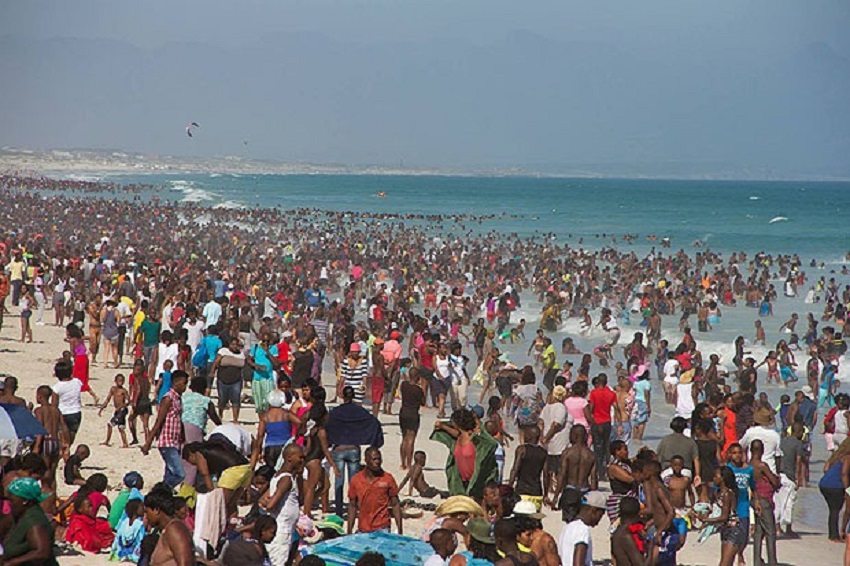South Africa’s coastal areas are places of interest to South Africans and people across the world because of its natural beauty. This festive season, many holidaymakers are expected to flock these enchanting areas to get some leisure, amusement and adventure.
While this is a good thing, there have always been reports about people being dragged off by water and getting drowned. It is believed that drowning is the second leading cause of accidental death in South Africa after road accidents.
For instance, data culled from Sea Rescue South Africa has it that 600 children die from drowning every year in the country. Other details of the said data are as shown below:
- 2,000 fatal drownings per annum and 20,000 non-fatal;
- for the fatal drownings, 600 are children (0 -15 years);
- for the non-fatal drownings, 6000 are also children (0 – 15 years).
In view of the foregoing and other water-related accidents that are not necessarily peculiar to South Africa, these are the things you ought to know before visiting South Africa’s coastal areas. You can regard them as the water safety tips the South African Police Service (SAPS) wants you to observe.
Safety Tips For Visiting South Africa’s Coastal Areas
1. You Can’t Trust The Water
Why? It’s simple, while waves and rip currents can be very strong and unpredictable, water depth can change rapidly along the coastline. Don’t trust the water.
2. Watch The Waves
SAPS wants you to take time and watch the waves before entering the sea. Beyond this, you must avoid places where there is a strong backwash, obvious rip currents or a danger of being washed onto the rocks.
3. Weather Matters
It is important you check the weather and the tides before you leave your home, avoid the sea if it is too rough, you could be swept away.
Read Also: This Is What MTN Wants You To Know About SIM Swap Scam
4. Straight and Gentle Waves Are Your Friends
Whenever you experience a strong current, you are advised to get out of the sea. If you are unwilling to do this, do not go in deep. Only enter where the waves are gentle and straight.
5. Drunk Swiming Is Disastrous
You are warned to never swim while you are intoxicated. Apart from the fact that alcohol impairs judgement and inspires the taking of unnecessary risks, an intoxicated swimmer gets tired easily and this increases the chance of an accident or drowning.
6. Know The Surf Conditions, Obey The Lifeguards
7. Pay Mind To Flags and Warning Signs
While a red flag means it is dangerous to swim, a red-and-yellow flag means lifeguards are on duty and you should only swim in the area between the flags. Always look out for warning signs and flags.
8. Heavy Meal Is Bad News
As much as you can, avoid hitting the water immediately after having a big meal. You are likely to have cramps and a life-threatening swimming experience.
9. Shallow Seawater Is Another Bad News
This is obvious as many paraplegics broke their necks by diving into shallow pools and dams. It is risky, do not dive into shallow seawater.
10. Sharks, Sharks, Sharks and Bluebottles
You don’t have to panic; all you need to do is to avoid swimming in river mouths, in dirty water, very early in the mornings, early evenings or after it rained. Shark activities do increase in these conditions. Meanwhile, you are expected to avoid the water when bluebottles are present – they are poisonous.
Check Out – Top 10+ Most Beautiful Cape Town Beaches
11. Care For The Kids
You are asked to never leave a child unattended near the water or make a child responsible for another child. Don’t do this for even five minutes; teach the kids to always ask for permission before going near water. When a kid goes missing, check the water first as seconds count in preventing drowning or permanent disability.
Acknowledging that swimming aids like water wings or noodles are fun toys for kids, SAPS warned that they should never be used instead of approved flotation devices.
Top 20 Best Beaches In South Africa
20. Umhlanga Beach (KwaZulu-Natal)
19. Hobie Beach (Port Elizabeth, Eastern Cape)
18. Bloubergstrand Beach (Cape Town)
17. Gonubie Beach (Buffalo City, Eastern Cape)
16. Plettenberg Bay (Western Cape)
15. Plettenberg Bay (Western Cape)
14. South Beach, Durban (Durban)
13. Strand Beach (Western Cape)
12. Paternoster Beach (Western Cape)
11. Diaz Beach, Mossel Bay (Western Cape)
10. Ballito Beach (KwaZulu-Natal)
9. Sodwana Bay (KwaZulu-Natal)
8. Muizenberg Beach (Cape Town)
7. Cape Vidal Beach (Durban)
6. Gordon’s Bay (Cape Town)
5. Clifton Beach (Cape Town)
4. Nahoon Beach (East London)
3. North Beach (Durban)
2. Santos Beach (Mossel Bay, Western Cape)
1. Camps Bay Beach (Cape Town)
